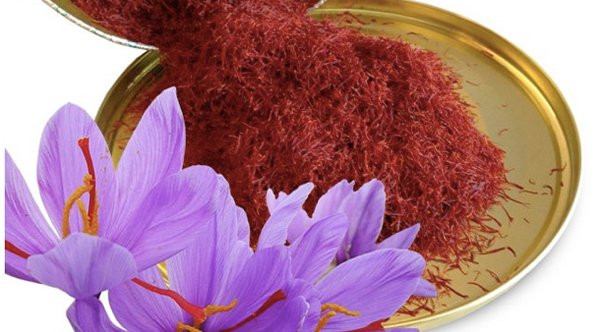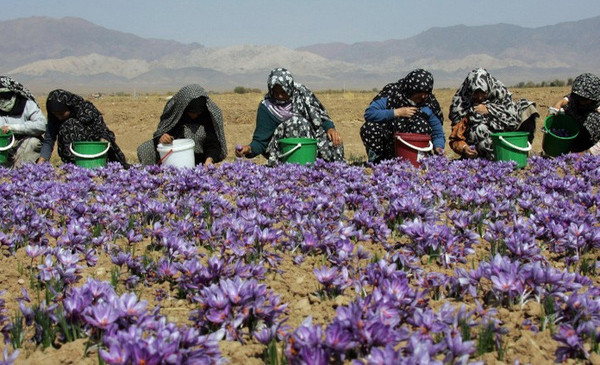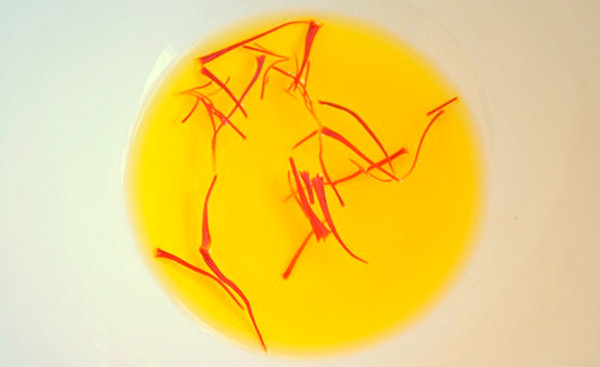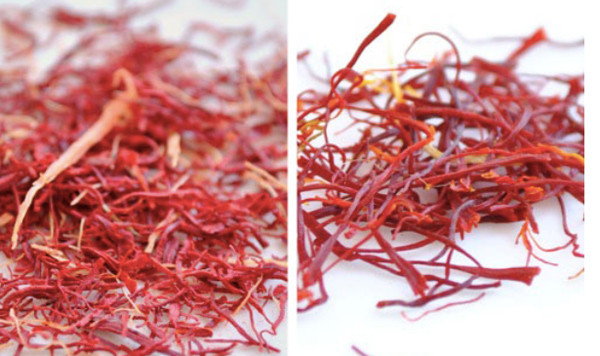The real effects of the spice more expensive than pure gold
To use saffron effectively, you need to use a large amount and regularly.
Saffron is an ancient cultivated plant originating in West Asia and the Mediterranean, now widely grown in Iran, Greece, India, Spain, and Türkiye.
Saffron pistils are meticulously harvested to create the world's rarest and most expensive spice (Saffron), dubbed the king of spices. In Vietnam, the premium variety costs nearly 700 million VND/kg.
The favorite spice of the nobility
The use of saffron dates back to the dawn of human history. In northwestern Iran, archaeologists have found 50,000-year-old cave paintings containing the red pigment of saffron.
On the Greek island of Thera, in the Aegean Sea, 3,500-year-old murals depict a Minoan goddess overseeing the production and application of a medicine made from saffron flowers.
|
| Saffron pistil has been used by the nobility since ancient times for beauty and medicinal purposes. |
Since ancient times, Arabs have used saffron to color their eyelids and nails; heroes also used it to dye their clothes, symbolizing glory and honor.
In China, as far back as 2600 BC, a book mentioned the medicinal properties of saffron. The Egyptians used it for medicinal purposes, as a perfume, dye, and in cooking. The ancient Persians believed that saffron could cure depression and often brewed it into hot tea.
In the 8th century, Muslims brought this spice to Spain and it has been used in high-class dishes ever since. During the Renaissance, saffron was literally worth its weight in gold.
King Henry VIII of England once threatened to kill anyone who adulterated saffron with cheaper spices.
Why is saffron so expensive?
Since ancient times, only the upper class could afford to use Saffron and today this spice is still super expensive due to its rarity.
The yellow stigmas of saffron flowers are harvested by hand in autumn. It takes about 170,000 flowers (68kg) and over 40 hours of work to get 1kg of stigmas.
|
| To get 1kg of Saffron, it takes 68kg of flowers. |
Because saffron is a triploid plant (3n=24), the purple flower part of saffron cannot produce seeds and cannot reproduce sexually. Each saffron plant has only 4 flowers, each flower has 3 stigmas.
Propagation requires human assistance, asexual reproduction by underground pseudobulbs and facing problems of pests and nematodes that cause diseases to the tubers.
Value in cuisine and medicine
In cuisine, Saffron creates a special flavor and color for high-class dishes of France, India, Italy, Sweden, Spain... The aroma of saffron pistil evokes a faint honey smell with a characteristic metallic smell along with the smell of grass or hay, slightly sweet, giving food a bright orange-yellow color.
Just a few strands of saffron are enough to give your dish the perfect aroma, taste and color.
|
| Just soak for a few minutes, saffron pistil will give a bright yellow color |
Saffron pistil contains many flavonoids, vitamins and apocarotenoids, so both traditional and modern medicine use it for its sedative, expectorant, aphrodisiac effects, treating diseases such as diarrhea, heart damage, lowering blood sugar, reducing blood fat, increasing immunity, smallpox, colds, kidney stones, alcoholism, cramps, insomnia, diabetes, asthma and depression, and can even slow the progression of Alzheimer's disease and cancer.
Modern medicine also recognizes Saffron as a powerful antioxidant that can reduce pain and inflammation.
Its anti-aging properties were used by ancient beauties for beauty purposes, including Cleopatra.
Saffron essential oil with more than 150 volatile aromatic substances, of which the main components are safranal (aroma), picrocrocin (bitter taste) and crocin (color), along with other carotenoids and terpenes with antibacterial, antifungal, and antioxidant properties, is one of the essential oils with good effects used to preserve food.
Parts of saffron such as pistils, leaves, bulbs, and petals also contain antioxidants (phenols, flavonoids, and carotenoids), but the highest is in pistils.
Good but must be in sufficient quantity and regularly
Although saffron has many uses in cuisine and medicine, with such an expensive price, you need to consider when rushing to buy it. If you buy it to use in cuisine to enhance the dish, increase the good effects for health through eating, then you do not need too much of this spice.
If you buy it for medicinal purposes, it is too expensive because to achieve medicinal effects, you need a large enough quantity and regular use.
|
| Saffron is counterfeited a lot, real (right) - fake (left) are hard to distinguish |
Not to mention the complex saffron market because of economic profit that is counterfeited a lot. If you buy poor quality products can have bad effects on health.
In fact, the counterfeiting of saffron has a long history and continues to this day. Fake saffron was first discovered in medieval Europe. Common methods include mixing in impurities such as beetroot, pomegranate fibers, red-dyed silk, or the odorless yellow stamens of saffron flowers.
In particular, saffron powder is more easily counterfeited with fillers such as turmeric powder, chili powder, etc.
Therefore, when spending a large amount of money to buy saffron, you need to carefully consider the origin, source, inspection certificate and guarantee stamp.
Currently in the world there are many research projects on species identification, helping to detect real and fake saffron pistils.




